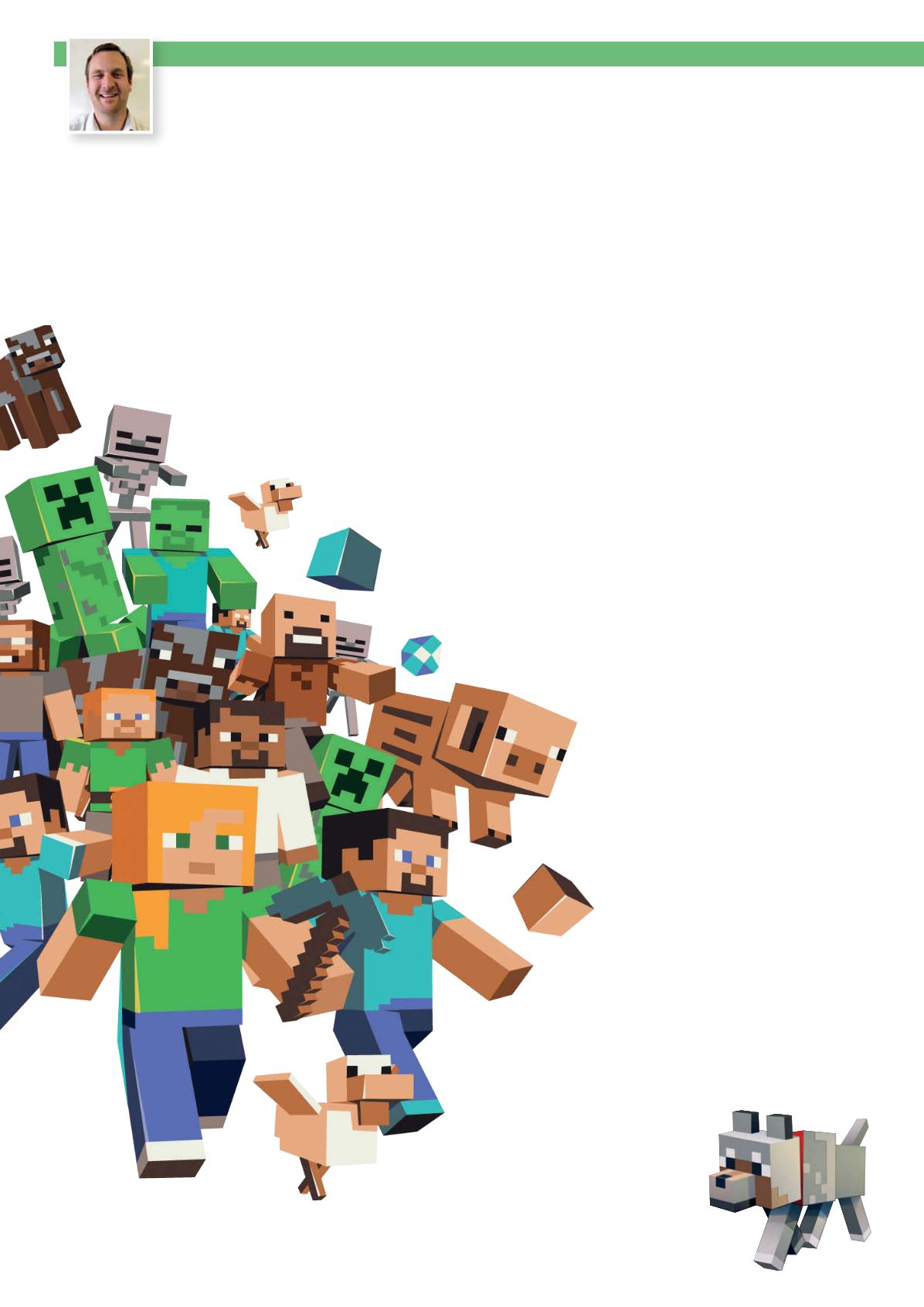
72
TEACH READING & WRITING
BLOCKS
Chocolate
When
ChrisWaterworth
asked his
class to recreateWilly Wonka’s factory
in Minecraft, there were delectable
changes to children’s writing...
CHRISWATERWORTH
has been working in primary schools and experimenting with technology for over 10 years.
I
t is possible youwork in a primary school
and somehowhaven’t (repeatedly) heard
aboutMinecraft, but it’s unlikely – such
is its popularity.
But despite children’s
enthusiamfor the program, which allows
you tobuild your ownworldswith a variety of
simple blocks, many teachers I’vemet shun the
idea of using a ‘game’ in the classroom–which
seems oddwhen you consider its potential for
engaging children in learning (particulary now
Minecraft EDU, the school-ready remix of the
original, has been purchasedbyMicrosoft,
making it easier to access).
Yes, if usedwithout purpose the gamewill
be aflash in pan – a gimmick; fun at first but
lacking in educational value. But forme it
seems an obvious opportunity to improve the
learning outcomes for the children inmy class,
particularly the reluctant writers, which iswhy
I took the plunge and tested it withmy seven-
year-old son, and haven’t looked back since.
Creatingaworld
forwriting
Getting caught up in a great book is, inmy
experience, thefirst step childrenmust take
in order towrite creatively, as being immersed
in a story gives themmanymore ideas to
includewhen it comes to putting pen to paper.
I startedmyMinecraft experiment by reading
RoaldDahl’s Charlie and the Chocolate
Factory – one ofmy all-time favourites and a
fairly safe bet if youwant to engage the class.
Having read the book and explored its
characters using
drama and
roleplay, I told
the children that
therewas a
sectionmissing
– the infamous


